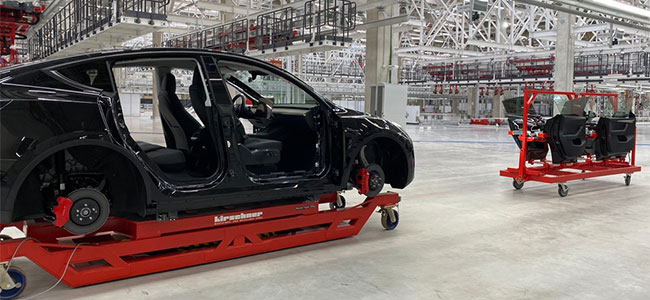
Building the Future Navigating Safety Hazards in the Surge of EV Gigafactory Construction
With many big-name auto brands racing to manufacture electric vehicles, the construction industry is racing to keep pace with demand, but what does that mean for worker safety and PPE needs? There are four key stages of construction to examine.
- By Omar Vikin
- Sep 06, 2023
Electric vehicles (EVs) have experienced a remarkable surge in growth in the past few years. Sales of EVs are expected to grow by another 35 percent in 2023 alone. This boom welcomes new jobs in all areas of the EV manufacturing process. Since 2018, there has been a 29 percent increase in the number of people employed in this industry with no signs of slowing down.
With the number of new electric vehicle brands emerging and already established car brands creating their own electric vehicle lines, it’s no surprise that more factories are being built to accommodate this boom. In 2021, automakers announced $36 billion of investments to build facilities dedicated to manufacturing EVs and batteries.
If you haven’t heard of a Gigafactory yet, you soon will. Coined by Elon Musk in 2013, the term Gigafactory has been adopted by the broader EV industry to refer to their battery manufacturing plants. With electric vehicles taking the auto industry by storm, 13 additional U.S. plants have been announced and are expected to be operational by 2025.
These Gigafactories are expansive. For example, the latest U.S. Gigafactory that is currently under construction in Austin, Texas, has over 10 million square feet of factory floor — equivalent to 100 football fields. These factories have evolved from just producing batteries — they can now execute the entire manufacturing process of an EV in one building.
With this uptick in construction jobs for the EV industry, workers will face new hazards and safety protocols. Let’s talk about the four stages of EV facility construction. We’ll break down the four stages with groundwork, formwork, installation work, and interior work and touch on the main hazards and solutions in each stage. With construction being such a vast industry, protective gear can vary from job to job, and so can the hazards.
Stage 1. Groundwork
First, let’s discuss the groundwork stage. This is the first stage and base of any construction project. This includes all the initial work that goes toward creating a good foundation. There are several hazards in this stage.
This article originally appeared in the September 2023 issue of Occupational Health & Safety.